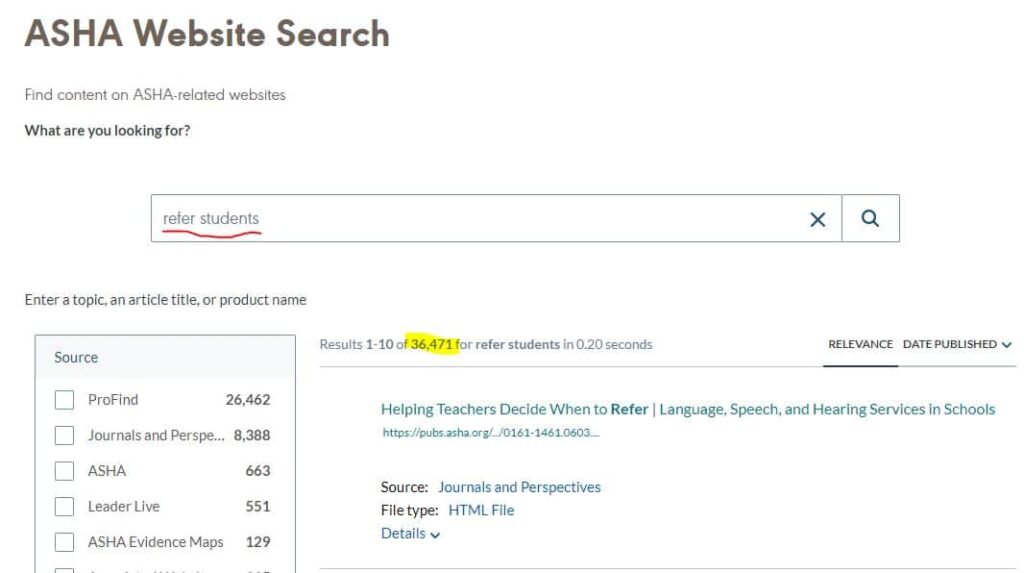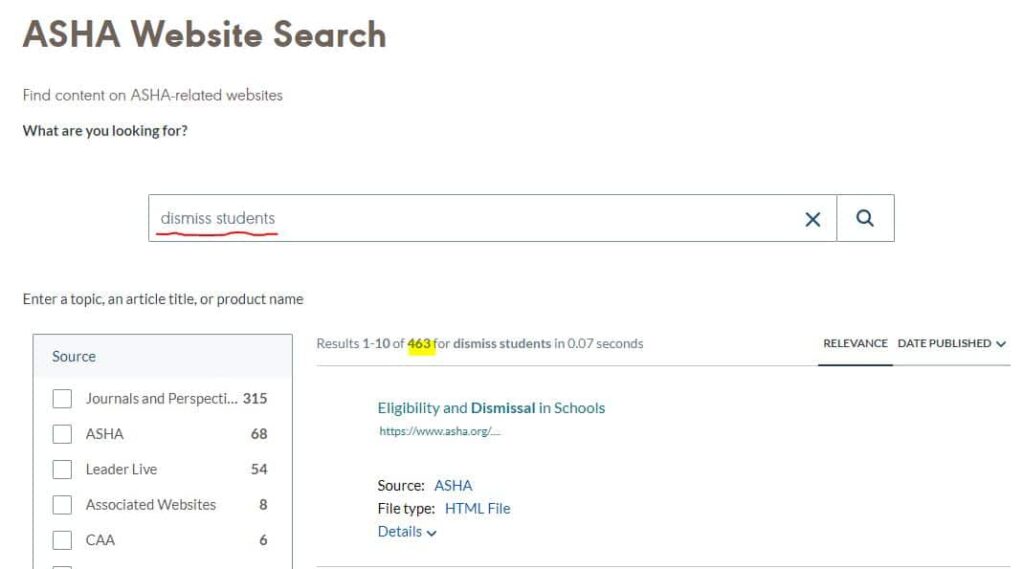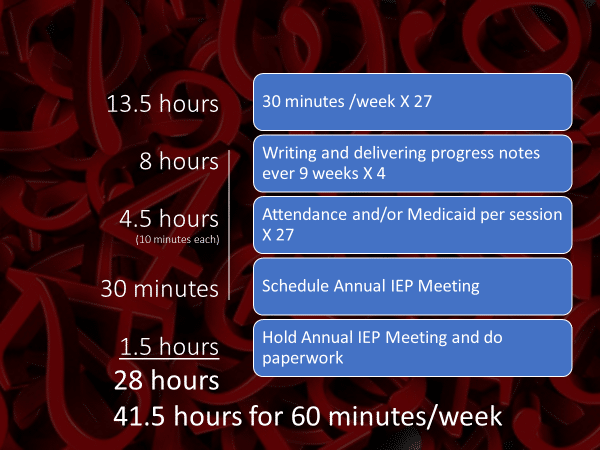A recent essay: Are All of the Greatest Problems in Education Related? caused quite a bit of thinking on the parts of SLPs all over the country when we were talking about reducing our caseload. Most people are on board with the idea but an interesting problem arose:
It takes time to test to potentially dismiss a child from special education. When you put that up against the amount of time it takes to work with a child on your caseload, that doesn’t seem like a good bargain.
But is it?
What is the actual cost of not-testing a child? For argument’s sake, we are setting aside whether a child would or would not qualify. Obviously, all students who do not appear to need services should be tested in consideration of dismissal from speech services. But we thought it would be interesting to do the math and put “the time cost of testing” up against “the time cost of intervening” and see where we land.
Are you ready?
First, I want to set your mind at ease.
Do Speech Language Pathologists Have the Training and Resources to Effectively Dismiss Students?
So many of the greatest problems we face in special education are related to caseload size. Difficulties with funding, finding enough staff, over-identification of students from diverse backgrounds,… and the amount of paperwork we do correlates with these issues and the number of children we see.
And yet, much of the continuing education we have access to and federal programs are focused on getting children ON our caseload. You read that right, “ON.” Yes, the say; the RIGHT kids ON. But ON means ON.
Have you ever attended a training on the referral process or Response to Intervention?
Have you ever attended a training on how to effectively reduce your caseload? I think these numbers say it all. I did 2 searches on ASHA.org for “refer students” and “dismiss students” which brought up all of the products, courses, presentations, and research related to the two topics.
The number of Referral resources is 78X greater!


So if you are feeling that not enough energy has been focused on this issue, you are not alone.
Have any of you covered dismissals in your grad program? Was it a course? Was it an add on? Probably not. So if there’s any guilt or any frustration around this, you’re right to feel frustrated, but you’re not right to feel guilty because I have to say that as a profession, we weren’t given the tools to do this.
The referral process is important and needed. It supports that notion that we need to get the correct kids on the caseload, which is absolutely true. We don’t want to open the front gates, but we don’t have an equal mechanism for getting the right kids off. And that’s where the problem and the growth of the caseloads come in.
An SLP Version of the Far Side Comic
Bob, there are too many widgets in the warehouse. So, I have organized a training on how to get more of “the right” widgets into the warehouse. There is also federal funding to create a 3-6 month process where we walk all employes through the steps to correctly identify good widgets. It’s called Response to Widgets.
Shouldn’t we just reduce the number of widgets?
You’re funny, Bob! Are you new here?
How much time does it take to remove a student from your caseload?
Okay, honesty hour. Aren’t you suggesting that I have to do more work? Have you seen my schedule? Do you know what my caseload size looks like here in Indiana?
You don’t want to force evaluations on yourself and then have a child continue to qualify. Sure you’ll get better goals out of it, but you’re absolutely right, it would not be a good use of your time. But we need to take a look at the absolute math here. We polled our group and came up with the general tasks that make up a school evaluation. Then we asked how much time it would take and 10 hours was the average.
- Schedule a meeting
- Sign consent to test
- Test
- Write the report
- Schedule another meeting
- Upload paperwork
- Hold final meeting
Feel free to round up or down depending on your situation. Say 15 if you like. Either way it’s a solid chunk of time from beginning to end to get a student off of a caseload.

But not getting a student off your caseload doesn’t mean NOT 10 hours. Here is a better question:
What does it cost us to NOT dismiss a student that might need to go?
Let’s do the math on student you see for 30 minutes/week.
- 30 minutes /week X 27
- Writing and delivering progress notes ever 9 weeks X 4
- Attendance and/or Medicaid per session X 27
- Schedule Annual IEP Meeting
- Hold Annual IEP Meeting and do paperwork

If we add all this up and do the math, basically a student costs us 28 hours a year or 42 hours a year if they’re seen 60 minutes a week. So, while making ourselves do an extra evaluation sounds like heresy, we can save several dozens of hours and in the worst-case scenario get better goals from a child who still qualifies.
There are counter arguments to what I am proposing. The strongest is for children working in groups. You might say “dismissing one group student doesn’t reduce the work.” I would answer that the 28 hours might look more like the 10 hours in this case because you still don’t have to do the extra paperwork. So it is an even swap but still a chance at less work.
I think that each of us has at least one kid in mind that might need to go. Start with the sure-things–check in with parents and teachers to make sure they are on board and then test those students. The second best place is to deal with all the kids you have to reevaluate this year anyways. Why wait until May? Re-evaluate them in August to 1) get great goals for the year or 2) send them on their way!




